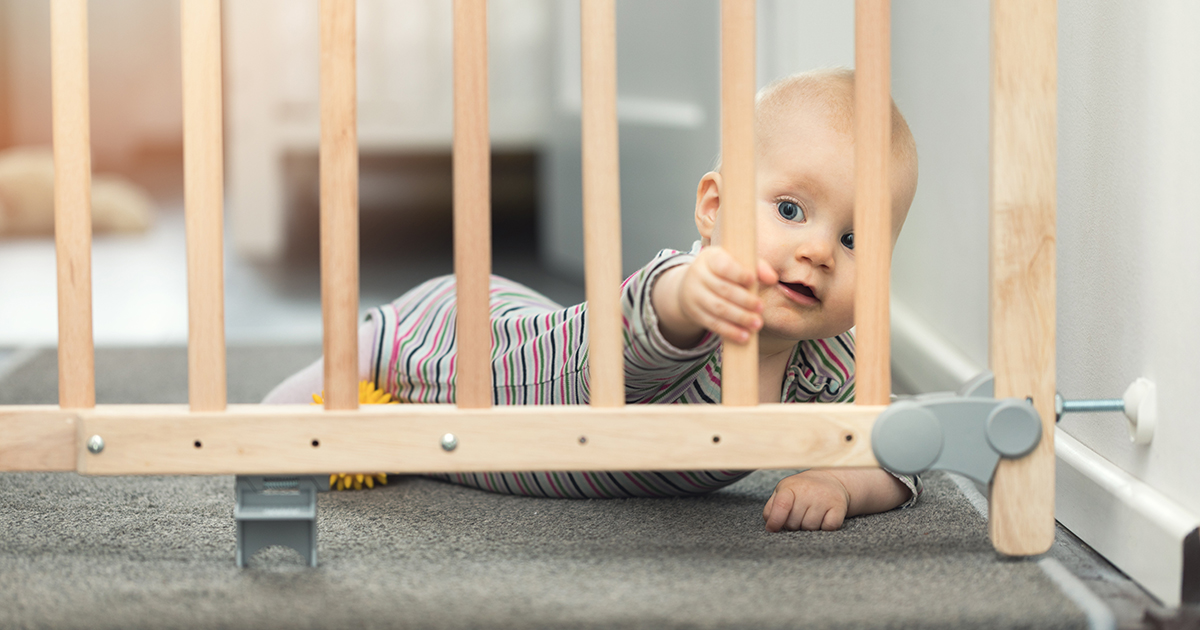
How to keep children safe at home
Talk to an expert
Keeping children safe, happy and healthy starts with creating a safe environment.
“Home is where most of life is lived, and a lot of times when children get injured, they are in their own home,” said Ameera Nauman, MD, FAAP.
“You want to make your home the safest place for your children to play in, explore and discover new things so they can grow and be healthy.”
Newborn
The largest threat to newborn safety in the home is germs.
“The safest thing you can do is make sure everyone is washing their hands frequently,” Dr. Nauman said.
Parents to newborns should also be sure to:
- Watch bath water temp. Turn down your water heater to no more than 120 degrees Fahrenheit to avoid burns.
- Use straps on the baby changing table. Infants should never be left unattended on a high surface, whether a changing table, bed or couch.
- Check smoke detectors. Don’t forget the carbon monoxide detector as well.
- Create a safe sleep space. Newborns should be laid flat on their backs on a firm surface. No thick pillows, stuffed animals, blanket, which could increase risk of sudden infant death syndrome (SIDS).
- Use a rear-facing car seat. Infants should ride in a rear-facing seat at least until they are 2 years old. More car seat tips here.
Toddler and childhood
Baby-proofing your home becomes even more important as children grow and begin to explore their environment even more.
“As children grow and change, their environment needs to change as well,” Dr. Nauman said.
The basics of baby-proofing are covering outlets and sharp table corners, securing heavy furniture to the wall and keeping long window cords out of reach.
Parents should also:
- Cover the trash can. Find a trash can with a cover that isn’t easily opened to keep kids out of the garbage.
- Lock up poisons. This includes cleaning solutions, batteries and medications (which can look like candy).
- Install stair gates. Gates should be positioned at the top and bottom of stairs.
- Remove weapons. Dr. Nauman suggests making your home a gun-free environment to decrease the risk of accidental shootings. If there is a gun in the home, be sure it is always unloaded and locked away – regardless of the age of your children.
- Keep a close watch. Small children should never be left unattended. In particular, they need close supervision
- Around pets.
- Near water (bath or pool).
- Outdoors.
Adolescent
As children get older, they might become interested in more dangerous activities.
Some of the most common causes of injury and death in adolescents are:
- Trampolines. They are especially unsafe when being used by multiple jumpers, which Dr. Nauman points out is how teens most often use them.
- Fire pits. Burn injuries can range from mild to life-threatening.
- ATVs and dirt bikes. Dr. Nauman suggests parents don’t invest in these, because injuries caused by a crash can be very serious.
- Bikes. From a young age, children should be taught proper bike and helmet safety.
Don’t forget the grandparents!
When your child spends time in the home of grandparents, friends or other family members, be on the lookout for any potentially dangerous areas of the home.
If your child does get sick or injured, urgent care can quickly get them back on their feet again.